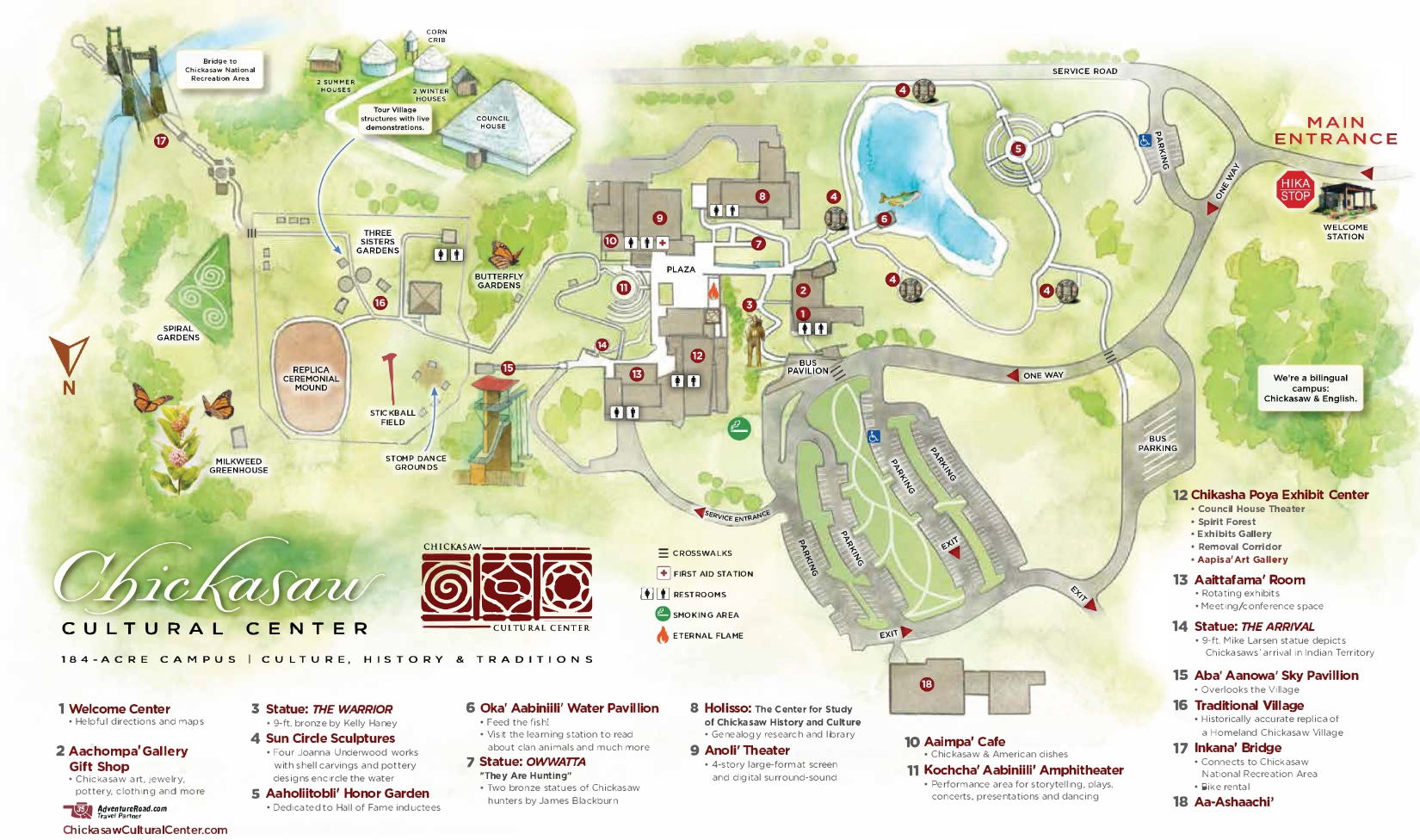At The Translation Company, we live and breathe communication, not just the kind that involves converting English into Spanish, Chinese, or Portuguese. Today, we’re diving into a universal language we all speak in different ways: Love.
You’ve probably heard of the Five Love Languages, coined by Dr. Gary Chapman. They describe the different ways people express and receive love:
But here’s the fun twist: Love languages aren’t just for romantic relationships, they also apply to friendships, families and yes… even professional relationships (just,you know, maybe skip the physical touch at the office).
So how does all this connect to translation?
Glad you asked. Let’s decode each love language like a pro translator. Because love, like any language, comes with its own idioms, and risks of misunderstanding, Our job is to make sure those messages of the heart are understood loud and clear – no dictionary required.
1. Words of Affirmation
This one’s close to our heart. It’s all about saying how much someone means to you – with kind words, compliments, or encouragement.
In our world, it’s the perfectly phrased love letter, the translated customer review that actually sounds like it was written in the original language, or the international marketing campaign that gives people goosebumps in every country.
2. Acts of Service
What’s more romantic than doing something for someone? In translation, this looks like anticipating what our clients need – delivering ahead of deadlines, formatting documents flawlessly, or ensuring every word lands with the intended meaning.
3. Receiving Gifts
In love, a meaningful gift shows you’re thinking of someone. In business, it might be a localized product launch, a holiday message in your client’s native language, or a multilingual user manual that makes someone’s life easier.
Translation is a gift of understanding – no wrapping paper needed.
4. Quality Time
Want to show you care? Put your phone down and listen. In our case, it’s taking time to understand a client’s voice, tone, and goals. We don’t just translate – we collaborate.
5. Physical Touch
This one’s a bit tricky in the professional world – we’re not suggesting surprise hugs during client calls. But think of “physical touch” in a broader, more metaphorical sense. It’s about tangible connection. In translation, that could be a beautifully printed report, design or packaging that speaks directly to the customer in their mother tongue. It’s love you can literally hold.
When you think about it, translation is a love language all on its own – it bridges gaps, nurtures relationships, and makes people feel seen and understood. Whether it’s affirming someone’s voice through precise wording, serving them with extra-mile dedication, gifting understanding through content, spending time to truly connect, or creating something they can touch and keep– we’re speaking love fluently every day.
And just like any relationship, the magic happens when we tailor our approach to the other person’s needs. Because when meaning doesn’t get lost in translation, it’s not just language that’s understood – it’s the people behind it.
When we use translation tools, we might expect that changing words from one language to another will give us the right meaning, but in real life, word-for-word translation often causes confusion. Languages are more than just words, they carry culture, emotion, and meaning that don’t always match exactly.
Let’s look at why this type of translation doesn’t really work.
1. Not All Words Have Exact Matches
Some words in one language have no simple match in another. For example, the German word “Fernweh” means a strong desire to travel far away. If we translate it word-for-word, it becomes “far pain”, which doesn’t make much sense in English.
Why this matters: If we stick to word-for-word translation, we often miss the full meaning of the message.
2. Different Word Order
Languages don’t all follow the same word order. In English, we say “She gave him the book”. In Spanish. It’s more like “She to him gave the book”. A word-for-word translation wouldn’t sound right.
Why this matters: Sentences can become confusing or incorrect if we don’t follow the right order for the language.
3. Idioms Don’t translate Well
Idioms are phrases that don’t mean exactly what the words say. For example, “kick the bucket” means “to die”. If you translate it word-for-word, people in other languages might think someone is literally kicking a bucket.
Why this matters: The meaning gets lost or sounds silly if we don’t explain what the phrase really means.
4. Culture Changes Meaning
Words can mean different things depending on the culture. A joke that’s funny in one country might not be funny, and maybe offensive in another.
Why this Matters: Without understanding the culture, translations can sound stranger or even rude.
5. Tone and Feeling Matter
Translation isn’t just about words. It’s also about the feeling behind them. Is the person angry, kind, formal, or casual? A machine or simple translation won’t always catch that.
Why this matters: The wrong tone can cause misunderstandings or make people fee uncomfortable.
Why Human Translations Are Better
Professional translators don’t just change words. They understand both languages, cultures, and emotions. They make sure the message sounds natural and clear in the new language. Tools like Google Translate are useful for quick help, but they’re not enough for serious work like websites, books, or business.
Word-for-Word translation might seem fast and easy, but it often leads to mistakes. If you want to share your message clearly in another language, it’s better to use someone who understands the full meaning and not just the words.
Let the Experts Help You
The Translation Company can help in making sure that your message is understood clearly, correctly, and with the right feeling.
We provide professional translation services that go beyond just words. Our expert translators know how to deliver your message with the right tone, style, and cultural understanding. Whether it’s a legal document, website, marketing material, or personal communication, we make sure it sounds natural and makes sense in any language.
How To Get Started
Free Quote
sales@thetranslationcompany.com
800.725.6498
#1 Contact us to get a free quote or questions answered, or
#2 Upload your files for an instant translation quote, or
#3 Schedule a free Zoom meeting with our team now.
This Week in Translation: Global Language News Roundup
On July 15, Karnataka Chief Minister Siddaramaiah shared a condolence message in Kannada mourning the death of actress B. Saroja Devi. But Meta’s automatic translation wrongly read:
“Chief Minister Siddaramaiah passed away yesterday…” India TV News
This mistranslation suggested the Chief Minister himself had died and this has fuelled shock and confusion.
Siddaramaiah called the error “distorting facts and misleading users,” calling it especially dangerous when dealing with official communications.
His media advisor formally wrote to Meta on July 16, urging them to temporarily disable Kannada auto‑translation until the system is improved. Source: Business Standard
Meta issued a public apology and said the issue was fixed, explaining it stemmed from a glitch in their AI‑powered translation tool.
However, Siddaramaiah warned users to view auto‑translated content with caution and urged tech platforms to take responsibility.
Why this matters for language professionals
- Trust and credibility: When machine translation misreports sensitive content, even small mistakes can erode public confidence.
- Regional complexity: Kannada and other regional languages have deep cultural differences that generic MT tools may mishandle.
- Control and oversight: Creators cannot disable auto‑translation in users’ feeds—raising concerns about transparency and accuracy.
Lessons & best practices
To avoid similar issues, translation teams and platforms should:
- Include native expert review for regional languages
- Label machine‑translated text clearly as “automated output”
- Give creators control to disable or edit translations
- Keep translation models updated and tested with real-world content
- Provide feedback channels for quick fixes when errors occur
Broader implications
This incident echoes past MT failures by major platforms—in Myanmar (2018), Palestine (2017), Malaysia (2024)—highlighting a global need for responsible language technology implementation.
For translation professionals, it’s a powerful reminder: machine translation is a useful tool, but it must be supported by human judgment and linguistic expertise.
Language translation services are undergoing a quiet but profound transformation. What was once viewed primarily as a behind-the-scenes activity like converting text from one language to another has now turned into a complex, multi-disciplinary ecosystem powered by knowledge, technology and creativity.
For translators, interpreters, and language professionals, this is not a threat but an opportunity. New roles are surfacing, demand is shifting and skills that combine human empathy with technical finesse are more valuable than ever.
Let’s explore some of the fastest-growing roles in the translation industry and what they mean for the future of the language services.
1. Localization Specialists
Translation gets the words right. Localization gets the message right.
Localization professionals don’t just translate, they transform. Their jos revolves around making sure that the content is appropriate for specific culture, regions and legal environments. Think of them as the cultural experts. They handle everything from website copy, and mobile apps to video games and e-learning content.
This role is in demand, particularly in industries that scale globally such as e-commerce, gaming and entertainment. It demands both linguistic fluency and an intimate understanding of regional customs, humor, idioms and regulations.
In short: it’s where language meets user experience.
2. Transcreators
Some messages can’t be translated, they have to be reborn in another language.
That’s the job of transcreators. They are commonly hired by advertising agencies, global brands, and creative studios. Transcreators blend translation with copywriting. They ensure marketing campaigns, taglines, social media posts, and brand stories retain their emotional and persuasive power across languages.
This isn’t just about linguistic skill, this is about storytelling. Transcreation roles are among the highest paid in the industry because they require empathy, cultural literacy, and creative spark.
3. Subtitlers and Audiovisual Translators
With the rise of global content platforms like Netflix, Disney+ and YouTube, the demand for subtitling and audiovisual translation has skyrocketed.
But this is no simple task. Subtitlers must match text to timing, lip movement, reading speed and cultural sensitivity. It’s a craft that blends language with technology, and for those who enjoy film, TV, and media, it offers a rewarding career path with global impact.
The same goes for voice-over translation and dubbing, which are now seeing a new light thanks to AI-enhanced production workflows and the need for high-quality multilingual accessibility.
4. Quality Assurance and Language Leads
As translation teams grow, maintaining quality becomes a job itself.
Enter the QA managers, language leads, and linguistic reviewers. These professionals oversee terminology consistency, enforce style guides, and spot errors before they go live. They often act as bridges between translators and project managers, combining an eye for detail with leadership skills.
This role is especially critical in regulated industries such as healthcare, finance, and legal, where mistakes are costly.
5. Terminologists and Technical Writers
Finally, we’re seeing increased demand for terminologists and technical writers especially in sectors where precision is non-negotiable.
Terminologists develop termbases and manage specialized vocabularies across projects and languages, Meanwhile, technical writers create documentation, manuals, specifications, and knowledge bases for products and services that often span multiple markets.
These professionals often work closely with subject-matter experts, engineers and compliance teams. Their goal is to make the complicated feel simple and universally understandable.
The lines between translator, writer, designer, and technologists are blurring. What’s emerging is a new kind of language professional: one who is comfortable in working in a CAT tool as they are brainstorming creative copy; who understands the subtleties of language and the constraints of user interfaces; who brings both precision and heart to their work.
For linguists ready to evolve, the future is bright and multilingual.

Ever wondered how much translators earn? Whether you’re considering a career in translation, already immersed in linguistic work, or simply curious about this global field, this guide offers an inside look at the numbers—and the evolving roles—shaping the translation industry today.
As a profession, translation crosses every border. With U.S.-based companies hiring talent from around the globe, the income potential varies significantly based on location, language pair, job type, and specialization.
Freelance vs. In-House: Two Distinct Career Paths
A translator’s first decision is whether to work freelance or as part of an in-house team. Each comes with distinct trade-offs in earnings, stability, and autonomy.
In-House Translators
In-house translators are salaried employees who work directly for companies, organizations, or government entities. In the U.S., they typically earn around $36 per hour, which is $70,000+ annually for full-time work. These roles offer predictability, benefits, and long-term career growth, especially in specialized areas like healthcare, law, or government.
However, in-house positions can have a salary ceiling. While roles that require certification or technical expertise may pay more, overall compensation tends to level off compared to high-earning freelancers.
Freelance Translators
Freelancers enjoy greater flexibility and the potential for uncapped earnings. Rates range from $30 to $70 per hour in the U.S., and income depends largely on workload, specialization, and marketing. A skilled freelancer can out-earn many in-house professionals, though inconsistent demand and lack of benefits make it a more volatile path.
Some translators choose a hybrid approach—working in-house while freelancing on the side to boost income and diversify experience.
How Location Impacts Translator Pay
Geography plays a crucial role in how much a translator can earn. Rates and salaries are often reflective of local economic conditions and the cost of living.
United States
Translators in the U.S. are among the highest-paid globally. According to the Bureau of Labor Statistics, the median annual wage is $59,440. Entry-level or part-time professionals may earn under $36,000, while top-tier translators can exceed $100,000. Specialized fields, certifications (like the ATA), and work for government or technical sectors often lead to higher earnings.
United Kingdom and Western Europe
In the UK, the average annual income for translators is around £30,000 (USD $37,000), with specialist roles, such as medical translation for the National Health Service, reaching up to £57,000. Across Western Europe, average earnings generally fall between €20,000 and €36,000, with higher salaries in major cities like Paris, Munich, or Amsterdam.
Northern and Eastern Europe
In Northern Europe, rates are higher due to the cost of living. Translators in Sweden or Norway often charge premium prices. By contrast, professionals in Eastern or Southern Europe typically earn less, though the cost of living is also lower. Rates can be significantly below Western European standards, especially for generalist roles.
How Language Pair Affects Earnings
Not all language combinations are created equal. The earning potential of a translator is heavily influenced by the supply and demand of the language pair.
- English to Spanish: High demand, but also high competition. Average rates around $0.11/word, with annual earnings ranging from $50,000 to $60,000 for steady freelancers.
- English to Arabic: Similar to Spanish in rate and demand. Specialized fields like legal or medical translation may command slightly higher fees.
- English to German or French: Slightly less saturation than Spanish, leading to average rates of $0.12/word. Technical fields can push rates even higher.
- English to Japanese or Chinese: Complex and high in demand. MTPE and traditional translation in these pairs often pay above-average rates due to linguistic difficulty and cultural nuance.
- Rare languages (e.g., Icelandic, Danish, Thai): Lower supply often leads to higher per-word rates—up to $0.14 or more—but jobs can be fewer and less consistent.
Specialization is another key factor. Medical, legal, financial, and technical translators generally earn more than generalists. Fields such as marketing (transcreation) and literature have unique pricing models, including royalties or flat project rates.
The Rise of MTPE: Machine Translation Post-Editing
One of the most significant industry shifts is the widespread use of MTPE—Machine Translation Post-Editing. This process involves refining machine-generated translations to make them suitable for publication or internal use.
MTPE Rates
- Full human translation: $0.09–$0.20/word
- MTPE: $0.05–$0.09/word
- Hourly MTPE work: $20–$40/hour, depending on the region and subject matter
While it’s marketed as faster, MTPE often requires significant time investment, especially when the machine output is of poor quality. Many experienced translators negotiate MTPE rates that reflect the complexity and quality of the draft they’re improving.
Regional Trends
- U.S. and Western Europe: $0.07–$0.10 per word
- Eastern Europe and Latin America: $0.04–$0.07 per word
- Southeast Asia, India, Africa: $0.02–$0.05 per word, though many professionals in these regions target international clients to earn at global market rates
Language pair continues to affect MTPE pricing, with higher rates for complex languages like Japanese, Chinese, and Korean.
So, How Much Do Translators Make?
The answer? It depends.
A U.S.-based salaried translator might earn $60,000 a year. A freelancer in Latin America could make $15,000, yet live comfortably. A rare-language expert handling legal contracts might exceed six figures. The key variables are location, experience, specialization, and language pair.
The industry rewards versatility and ongoing learning. Translation is not a path to instant wealth, but for those with dedication, it offers a rich and sustainable career with global relevance. As technology reshapes how language services are delivered, the human touch, insight, nuance, and creativity remain essential.
For linguists who adapt, specialize, and evolve, the future is not just bright—it’s multilingual.
Understanding the Translator Income Landscape
So, how much do translators make? The answer is that it depends on how and where they work, and in which languages. A translator could be a comfortable salaried professional in New York earning around $60k a year, or a digital nomad freelancing from Buenos Aires making $15k, or a highly sought specialist charging top dollar for rare language projects. Both freelance and in-house paths can be rewarding: freelancers enjoy the freedom to set higher rates and potentially out-earn their peers, while in-house translators get steady pay and benefits (and entry into specialized roles). Location and language dramatically shape earnings, with U.S. and Western European translators generally making the most in absolute terms, and regions like Latin America or Eastern Europe seeing lower typical incomes in line with local economies. High-demand language pairs with lots of translators yield moderate pay, whereas uncommon languages or highly technical work can command premium rates.
In the end, translation income spans a broad spectrum. New translators might start on the lower end, but there is room to grow. As translators build experience, credentials, and expertise (or add lucrative language pairs), they can increase their earnings over time. The translation industry may not be a path to instant riches, but for those with skill and perseverance, it offers a viable and often enriching career, one where a love of languages quite literally pays off.

Many people believe that sign language is the same everywhere. After all, it’s all gestures, how different could it be?
But here’s the truth: sign language is not universal. Just like spoken languages, sign languages vary widely across the globe. There are more than 130 recognized sign languages, with hundreds of local variations.
Each of these languages has its grammar, vocabulary, and history. So, a person fluent in American Sign Language (ASL) won’t automatically understand someone using British Sign Language (BSL) even though both countries speak English.
Why So Many Sign Languages?
Sign languages developed naturally within Deaf communities. They didn’t come from spoken languages; they evolved on their own, shaped by culture, history, and the daily needs of the people who use them.
In every corner of the world, Deaf individuals have created their ways of communicating. Just like English differs from Chinese or Arabic, ASL, BSL, and other sign languages are completely distinct.
Let’s take a closer look.
Real Examples from Around the World
-
American Sign Language (ASL)
Used primarily in the United States and parts of Canada, ASL is one of the most widely used sign languages in the world. It’s a full language in every sense, complete with grammar rules, expressions, and a rich cultural background. ASL uses a one-handed alphabet and is closely related to French Sign Language (LSF), not BSL.
-
British Sign Language (BSL)
BSL is the main sign language used in the UK. Unlike ASL, BSL uses a two-handed alphabet and has completely different signs and structure. Even though ASL and BSL users both speak English, their sign languages are not mutually intelligible.
-
Japanese Sign Language (JSL)
Japan has its unique sign language, too. JSL incorporates elements of Japanese culture and language. It also includes regional dialects, much like spoken Japanese. A signer fluent in JSL would not be able to understand ASL or BSL without studying them first.
And these are just three examples. There’s also Indo-Pakistani Sign Language, Chinese Sign Language (CSL), and many more, each with its own identity.
Can Deaf People from Different Countries Understand Each Other?
In most cases, no. A Deaf person from Japan using JSL won’t be able to have a conversation with someone from the U.S. who uses ASL unless one of them has learned the other’s language.
While some international events use a system called International Sign, it’s not a true language. It’s a simplified blend of signs used to get basic ideas across, more like a temporary tool than a native language.
It’s often used at global gatherings like the Deaflympics or World Federation of the Deaf meetings. But it doesn’t replace local sign languages. And it’s far from universal.
Why Sign Languages Aren’t One-Size-Fits-All
Sign language is just as diverse as spoken language. The idea of a single, universal sign language sounds convenient, but it simply doesn’t exist. Each Deaf community has developed its language, shaped by local culture and history.
Understanding this distinction is essential, not just for those in the Deaf community, but for educators, travelers, and anyone curious about how humans communicate across borders.
Whether it’s ASL in North America, BSL in the UK, or JSL in Japan, sign languages reflect the uniqueness of the people who use them, and that diversity is something to be respected and celebrated.
That’s why learning about different sign languages isn’t just interesting, it’s important. It reminds us that communication goes far beyond words, shaped by the experiences and identities of people around the world.

The internet is filled with valuable information, but much of it is written in languages we don’t speak. Whether you’re browsing for news, shopping online, or doing research, learning how to translate a web page can help you access content from all over the world.
This guide breaks down the most effective ways to translate websites, with step-by-step instructions for beginners and helpful tools for regular users.
Why You Might Want to Translate a Web Page
Here are a few common reasons people need to translate websites:
- You’re researching something and land on a site in another language
- You’re traveling and need to read local pages
- You want to follow international news or blogs
- You found a great product, but the store’s site isn’t in your language
Instead of leaving the page or guessing what it says, you can translate it in just a few clicks.
1. Translate Pages Automatically in Your Browser
Google Chrome
Chrome usually detects foreign languages and offers to translate them automatically. If it doesn’t:
- Click the three-dot menu in the upper-right corner.
- Go to Settings > Languages.
- Turn on “Offer to translate pages that aren’t in a language you read.”
When you visit a foreign site, Chrome will ask if you want to translate. You can click “Translate” right there.
Microsoft Edge
Edge uses Microsoft Translator:
- When you land on a non-English page, a prompt will appear.
- Click “Translate” to read the page in your language.
- You can also click the translate icon in the address bar if you miss the pop-up.
Safari (Mac/iPhone/iPad)
Safari’s built-in translation is quick and clean:
- Tap the aA icon in the address bar.
- Choose Translate to English (or your preferred language).
- If you don’t see this, go to Settings > Safari > Language to enable the feature.
2. Use Google Translate for Any Page
If your browser doesn’t have a translation tool—or you want more control—try Google Translate’s website:
- Visit translate.google.com.
- Paste the web page URL into the box.
- Choose the original and target languages.
- Click the translated link to view the page.
This is a great backup tool for any device and supports over 100 languages.
3. Install a Browser Extension
If you translate often, a browser extension can save you time:
- Google Translate for Chrome: Adds a toolbar button for quick translation.
- ImTranslator for Firefox: Offers several translation services with advanced features.
With these tools, you can translate full pages or selected text without switching tabs.
4. Mobile Translation Options
Google Translate App
The app is powerful and simple:
- Open the app and tap “Websites”
- Enter the URL
- The site loads in your chosen language
This is ideal for translating web pages on the go, especially if you’re using Safari or another browser that doesn’t support translation well.
Things to Keep in Mind
- Automatic translations aren’t perfect. They may miss context or use awkward wording.
- Don’t rely on machine translation for legal, technical, or sensitive content—use a professional translator instead.
- Some site elements may not translate, especially if they’re images or embedded code.
Going Beyond: Making Your Own Site Multilingual
If you have a business or blog and want to reach more people, making your website available in more than one language is a great idea. Tools like Phrase, WPML for WordPress, and Weglot make it easier to manage translations in a professional way.
Learning how to translate a web page is also a handy skill. It helps make the internet feel smaller and more welcoming. With just a few steps and the right tools, you can discover new content, connect with different cultures, and find the information you need.
Want to make your site available in multiple languages? Get in touch with us at The Translation Company. We’re here to help.
3 Common Ways to Translate a Website
Before diving into the translation process, it’s essential to choose the method that best aligns with your goals—whether that’s speed, cost-efficiency, or linguistic precision.
1. Human Translation
This method involves hiring a professional translator to convert your website content into another language. It’s one of the most reliable and trusted approaches.
Why it’s a good choice:
- Highly accurate
- Considers meaning, tone, and cultural nuance
- Maintains your brand’s voice and style
- Ideal for creative and catchy content
- Supports search engine optimization (SEO)
Things to consider:
- More expensive than other methods
- Takes longer to complete
- Potential for human error (e.g., typos)
- May encounter delays due to translator availability
2. Machine Translation
This method uses AI-powered software to translate your content automatically. It’s a fast and cost-effective solution, especially for large-scale projects.
Why it’s helpful:
- Immediate results
- Cost-effective
- Scalable for extensive content
- Easily reviewed and edited afterward
Limitations to keep in mind:
- May not suit nuanced or creative content
- Often lacks natural flow or appropriate tone
- Misses idiomatic and cultural subtleties
- Can be less engaging or misleading without review
3. Post-Editing Machine Translation (MTPE)
This hybrid approach combines the speed of machine translation with the quality assurance of human editing. A translator refines the machine-generated text to ensure clarity, accuracy, and natural flow.
Why it’s becoming popular:
- Faster than full human translation
- More affordable than traditional methods
- Offers a strong balance between quality and efficiency
Need Help Translating Your Website?
At The Translation Company, we’ve helped numerous businesses successfully localize their websites for global markets. Whether you’re looking for the accuracy of human translation, the speed of machine translation, or the balance of MTPE, we’ve got you covered.
Interested in learning more or starting your project?
Reach out to us today and we’ll make sure your website speaks every language your audience does.

If you’ve ever thought about picking up a second (or third!) language, you’ve probably asked yourself, “What is the easiest language to learn?” It’s a totally fair question because who doesn’t want to make the journey a little smoother?
The thing is, there’s no one-size-fits-all answer. What feels easy to one person might be tricky for someone else. But don’t worry, we’re diving into what actually makes a language easier to learn and which ones are great starting points if you speak English.
So, What Makes a Language “Easy”?
First off, “easy” is relative. It depends on a few things like:
- Familiarity with the alphabet: If a language uses the same letters as English, you already have a head start.
- Grammar and sentence structure: The fewer weird rules and exceptions, the better.
- Similar vocabulary: If a word in another language looks or sounds like its English cousin, it’s easier to remember.
- Pronunciation: Some languages just sound easier. Others make your tongue feel like it’s doing gymnastics.
- Exposure: The more you see or hear the language in your everyday life, such as through TV, music, or social media, the faster you’ll learn it.
Now let’s talk about a few languages that tend to be easier for English speakers.
1. Spanish – The Classic Starter Language
Spanish is very popular, and for good reason. It’s phonetic, meaning you read it the way it’s written. The grammar is logical, and there are tons of free resources. Plus, you’ll run into Spanish speakers all over the world, from Spain and South America to your own neighborhood.
2. French – Fancy, But Friendly
French has a reputation for being a bit tricky, especially with all the silent letters, but don’t let that scare you. A lot of English words actually come from French, so you’ll recognize more than you think. And let’s be honest, it’s hard to beat how beautiful it sounds.
3. Italian – Like Music to Your Ears
Italian is basically made to be spoken out loud. The pronunciation is clear and consistent, and the grammar feels manageable once you get the hang of it. If you’ve ever dreamed of ordering pasta in perfect Italian while in Rome, this might be your sign.
4. Norwegian – A Hidden Gem
This might be a surprise, but Norwegian is one of the easiest languages for English speakers, according to the U.S. Foreign Service Institute. It has simple grammar, familiar words, and pronunciation that’s easier than you might expect. Plus, once you know Norwegian, understanding Swedish and Danish becomes much easier too.
5. Dutch – Like German, But Kinder
Dutch is kind of the “middle child” between English and German. Some sounds can be tough, but the grammar is more forgiving than German’s. The vocabulary often feels oddly familiar. It’s quirky, in a good way.
A Quick Reality Check
Here’s the truth: the easiest language to learn is the one that keeps you motivated. You could go for the “simplest” option, but if you’re not interested in the culture, music, or people, it’s going to feel like homework. On the other hand, if you’re obsessed with Korean dramas or planning a trip to Brazil, those languages will naturally feel more fun, and that makes them easier to stick with.
So, what is the easiest language to learn? It depends on you. But if you’re an English speaker and looking for a friendly place to start, Spanish, French, Italian, Norwegian, and Dutch are great options.
Pick the one that sparks your curiosity. Download a language app, watch a show in that language, or find a conversation partner. You’ll be amazed how quickly it starts to click when you’re enjoying the process.

Quick spanish
Spanish is among the world’s most common languages, and fluency will enable you to tap into new cultures, professional opportunities, and self-improvement. Whether you’re getting ready for a trip, growing a company, or just a new challenge, Spanish is something you can learn fast if you make the most of the opportunities.
1. Concentrate on High-Frequency Vocabulary
Begin by mastering the 1,000 most frequently used Spanish words. The vocabulary you know at this level enables you to listen to and engage in common conversations. Materials such as the Corpus del Español offer lists of the basic words and help you learn according to priorities.
2. Surround yourself with the Language
Immersion is a powerful means of learning a new language. Surround yourself with Spanish by watching TV shows, listening to music, and reading Spanish material. Sites like Lingopie provide interactive content such as dual-subtitled videos, allowing you learn vocabulary and pronunciation within context.
3. Practice Speaking Regularly
Spoken practice is imperative for fluency development. Practice conversation using native speaker exchange websites or take a tutor for one-to-one sessions. Practice on a regular basis and you will get more confident and develop the ability of pronunciation and comprehension.
4. Learn Using Language Learning Apps
Use technology to improve the way you learn. There are apps such as Duolingo, Memrise, and Busuu that provide systematic lessons, tests, and games that are designed for different types of learners. These tools allow you to supplement your studies and offer a means for regular practice.
5. Set Realistic Goals and Maintain a Routine
Set definite, realistic objectives for the journey of learning a new language. Whether you spend 30 minutes a day on lessons or learn a set number of words each week, consistency will be the key. Practice on a regular basis supports what you know and keeps you going.
6. Accept Mistakes as Opportunities to Learn
Don’t be afraid of mistakes; they are a necessary part of the process of learning. Each mistake tells you where you should improve and enable you to work on perfecting yourself. Stay positive and look upon challenges as opportunities for development.
7. Tailor Your Learning Experience
Use your interests and objectives as guidelines for your studies. If you’re interested in cooking, concentrate on food vocabulary; if you’re planning a trip, study about navigation and where you’re going to stay. Making the lessons relevant and interesting makes them easier.
8. Integrate Spanish into Daily Life
Make Spanish a part of your daily routine by tagging household objects, setting the device settings on Spanish, or mentally using the language while going about daily chores. Such minute changes provide a perpetual environment of learning and reinforce ability.
9. Connect with Spanish-Speaking Communities
Join social media groups, forums, or community events where Spanish is the predominant language. Speaking with native speakers gives you hands-on experience and exposure to various dialects and cultural aspects.
10. Track Your Progress and Celebrate Milestones
Remembering your achievements and recognizing your progress makes you more motivated. Rewards for small achievements enhance motivation and reinforce commitment towards learning. Reviewing goals and achievements on a regular basis ensures continued momentum.
How To Get Started
Free Quote
sales@thetranslationcompany.com
800.725.6498
#1 Contact us to get a free quote or questions answered, or
#2 Upload your files for an instant translation quote, or
#3 Schedule a free Zoom meeting with our team now.
Ever have one of those days where you learn something new, eat great food, and still feel like you’re on a mini vacation? That’s exactly how I’d describe our day at the Chickasaw Cultural Center in Sulphur, Oklahoma.
From the moment we pulled into the large and accessible parking lot, I could feel we were in for a special experience. We just followed the crowd into the reception area where friendly staff and tribal members greeted us with warm smiles. They handed us a super handy activities bag filled with coloring books, bracelet kits, Chickasaw-themed crafts, and a very easy-to-follow map and activity schedule. Right away, it felt like a perfect mix of educational and family-friendly.
First Stop: The Aachompa’ Gift Shop
Before we dove into the exhibits, we wandered through the Aachompa’ Gift Shop—and let me tell you, if you love handcrafted and meaningful souvenirs, this is the place. From Chickasaw jewelry, pottery, bows, and traditional clothing to t-shirts, stickers, and exclusive Pendleton blankets (like the “Issobombiniili’ – Rides on a Horse” pattern by Brent Greenwood), there really is something for EVERYONE!. The prices were reasonable too. We walked away with a really cool mug ($7!) and the cutest bison plush ($7).


Holisso: A Deep Dive into Chickasaw History & Heritage
Right outside the shop is the Holisso: Center for the Study of Chickasaw History and Culture. This library is filled with beautifully preserved records and archives. I was blown away by the advanced tech they use to preserve and share oral history, genealogy, and more. If you’re into ancestry or tribal history, definitely make an appointment (info at the bottom of this post). Oh, and there’s a NASA uniform worn by the first Native American astronaut on display—super cool!
Lunchtime at Aaimpa’ Café: Delicious and Affordable
After soaking in so much knowledge, we were ready to eat. At Aaimpa’ Café, the warm greeting continued—this time in the Chickasaw language! The food was flavorful and crazy affordable. The kids enjoyed their huge sugar cookies and I indulged in the chocolate and coconut cookies, YUM!
They’ve got indoor seating, free WiFi, and it’s all super cozy. There’s even a theater inside the café building where they show cultural films and fun kids’ movies too.

2023-aaimpa-cafe-menu-revised (Download the menu)
Chikasha Poya Exhibit Center: A Journey Through Time
Across from the café, we headed into the Chikasha Poya Exhibit Center ($7 per person, totally worth it). This interactive space blew us away with exhibits that pulled you into Chickasaw history—everything from early European contact to present-day cultural achievements. If you’re traveling on a budget, you can still enjoy outdoor artist stations for free and use your cash for one-of-a-kind handmade art.
The Chikasha Inchokka’ Traditional Village: An Unforgettable Experience
This was the highlight of the whole day. Walking through the Chikasha Inchokka’ Traditional Village felt like stepping back into the 1700s. The path across the sky bridge was stunning (and makes for great photos). Once inside the village, we learned about Chickasaw homes, council houses, corn cribs, and even watched a stomp dance demonstration. Tribal members were dressed in full regalia and explained the significance of each piece.

Chickasaw Boots
We even joined in a social dance—it was such a powerful and joyful moment. There were also presentation stands where tribal members explained how they created their cultural artifacts, very interactive and friendly.

Chickasaw Tribe
Quick Q&A: What You Need to Know Before You Go
- Pets aren’t allowed, but trained service animals are welcome.
- Open: Tuesday–Saturday, 10 a.m.–5 p.m. The café serves full menu 11 a.m.–3 p.m.
- Fully accessible. Wheelchairs and golf cart service available. They also offer golf card rides that are fun and free.
- Activities move indoors when needed. Tornado shelters are available.
- Pictures are allowed, but no flash in exhibits. Videos for personal use only.
- Outside snacks allowed in outdoor areas.
- Smoke-free campus. Smoking allowed only in designated parking lot areas.
- No weapons, glass, alcohol, drugs, or tobacco products on campus.
- Lost & Found available, ask security at the Welcome Center.
- Most of the center is free! Only Chikasha Poya Exhibit Center and some films require tickets.
- ️️️Group discounts available. Call (580) 622-7130 or email: Special.EventsCCC@Chickasaw.net.
- ️️️Food available: First American dishes and modern options. Try the elk burger, buffalo sandwich, or Chickasaw Special!
The visit to the Chickasaw Cultural Center was more than a day trip—it was an experience filled with discovery, culture, and heartfelt connections. Whether you’re traveling solo, with kids, or bringing the whole family, this place offers something for everyone.
Address: 867 Cooper Memorial Dr., Sulphur, OK 73086
Phone: (580) 622-7130
️️ Getting There: Take exit 55 off I-35. It’s about 10 minutes east of the highway.
Trust me—you’ll walk away with more than souvenirs. You’ll leave with a deeper understanding of a people and culture that continues to thrive and inspire.

Chickasaw Campus Map
